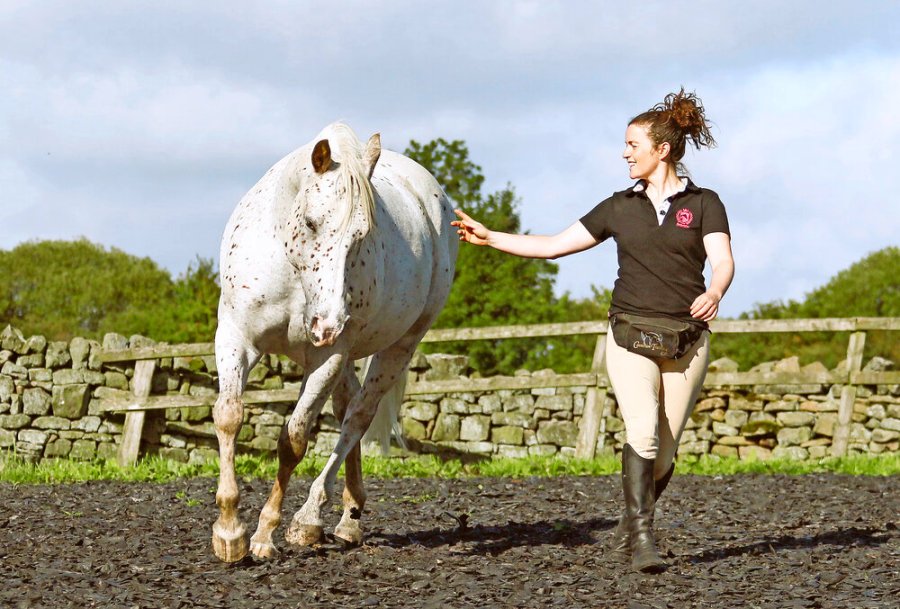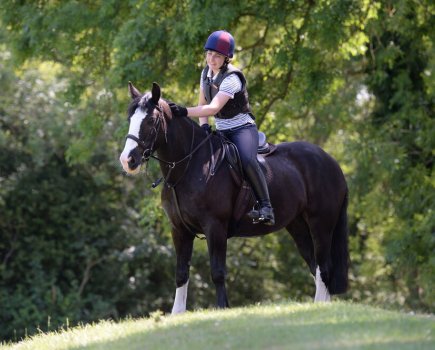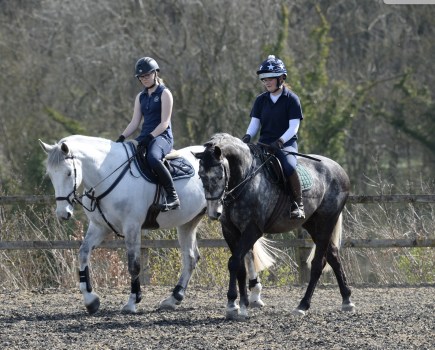Transform your relationship with your horse by adopting a reward-based training technique. Hannah Weston and Rachel Bedingfield from Connection Training help you to get started.
There are three core elements to Connection Training and you can use them to help you create a healthy, happy horse who loves his work.
How does your horse feel?
Connection Training is focused on creating the best experience for you and your horse. Hannah and Rachel believe that horses should love their time with you, enjoy their training and have their voice listened to.
Their focus is on building positive emotions around you and your training sessions so that your horse feels calm and confident when you work together.
The training method increases your horse’s motivation through using rewards and by engaging his curiosity and playfulness.
You can use the techniques in most situations, such as motivation to go faster, load calmly, or make arena work more enjoyable.
It also prioritises relaxation through training, recognising small signs of tension or anxiety, and helping your horse to feel relaxed at that stage before moving on with the exercise.
Your horse’s emotional state determines his behaviour, so by focusing on building relaxation and motivation, you can create a horse who is calm, focused and willing.
It’s then easier to work with him on improving any behaviour. You will find that the more you work in this way, the more relaxed, trusting and confident he will become.
Make it rewarding
Rewards are a powerful motivator and the basis of the method is rewarding your horse for the right response.
Shifting your focus to what he does well, not correcting what’s wrong, will help you to notice the good moments in your sessions, and increase the feeling of success for both of you.
All animals have evolved to repeat behaviours that bring rewards so, as you reward your horse for good responses, you’ll find that he does what you ask for more and more.
There are many rewards you can use, but food is highly effective and easy to use.
It’s important that food rewards are introduced in a way that keeps your horse calm, relaxed and polite. Other rewards you can use include movement, rest and scratches.
Clarity and communication
Good training requires clear communication. But how do you tell your horse “Yes! That’s what I wanted!” so you can reward him? Hannah and Rachel use a marker signal — a sound or gesture that marks the moment your horse gave the correct response.
A common marker signal is a click sound made with a box clicker or your tongue. A specific word like “Yes!” is also effective.
Using a marker is important because you can’t give your horse a reward at the exact moment he picks up the correct canter lead or holds his hind foot up for the farrier — but you can mark it.
Your horse will quickly learn that the marker signal predicts that a reward is coming and he’ll pay attention to what he did that caused the mark/reward.
Just rewards
As you progress, your horse will pay more attention and become more connected to you and his training — basically, he’ll be working out what he can do to get you to mark and reward him.
This process makes him more interested and keen to do the right thing.
As you focus on his emotional state and mark good moments, you’ll become more connected to him, too. This is the foundation of a strong and happy relationship between you and your horse.
To find out more about Connection Training, read the full article in our latest issue.
Don’t miss the latest issue of Your Horse Magazine, jam-packed with training and veterinary advice, horse-care tips and the latest equestrian products, available now.









